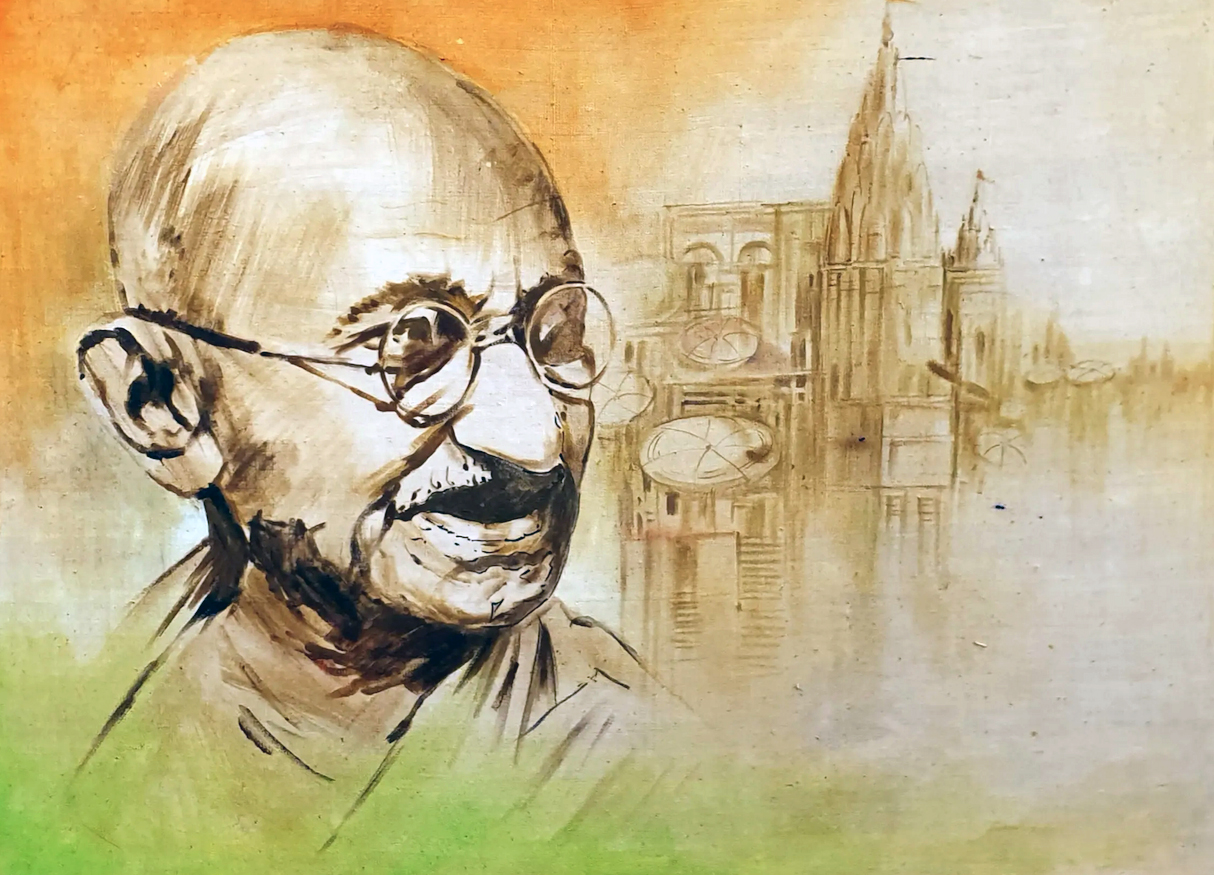It is fortunate that in India the masses are deeply conservative, and gifted with an uncommon strength of inertia. It isn’t impossible that, out of sheer indifference, and without even a vague awareness of what they are doing, they will successfully resist all the pressures exerted upon them to pull them away from Tradition, or from what they have been able to retain of it. They may even resist literacy—by which I mean the harmful effects that literacy has so often had on trusting and credulous populations of traditional civilisation.
They won’t necessarily lose faith in their Gods and in everything that, in their way of life, seems to them to be closely or remotely related to the divine order. I have alluded in these pages to the Viswakarma cult as I saw it practised in 1958 by the factory workers of Joda, Orissa. It isn’t impossible that for a long time to come, even to the end of this Dark Age—and not only in Joda but in the great and increasingly industrialised agglomerations—the ‘working masses’ of India will continue to ritually decorate with scarlet flowers, once a year, in honour of the Cosmic Worker, the steel monsters with their intricate workings, which help them to ‘produce’ more and more. No government, apparently, would object.
Besides, governmental objections don’t disturb the Indian masses, even the working class—let alone the rural ones. One of the first acts of the first government of ‘Independent India’ was to ‘abolish the caste system’ and open the temples to the untouchables, whom it is fashionable to call, in the phrase coined by Gandhi, ‘Harijans’ or ‘People of God’—as if all the living didn’t participate, more or less, in the divinity of Reality itself, in the Hindu world view.
 However, since my return to India in June 1971, I haven’t noticed that caste is, on the whole, less meaningful to Hindus and less important in their lives than it was forty years ago. You only have to open any large or small daily newspaper and read the matrimonial advertisements to be convinced of this. You will find sentences like this one on every page: ‘Wanted: young man Agarwala’ (this is a sub-caste of the Vaishyas, widespread in the United Provinces) ‘for a beautiful girl of seventeen years of age, from the same sub-caste; good housewife and well endowed’. Or: ‘Wanted: young girl of Brahmin Saraswati’ (this is a sub-caste of the Brahmins of Maharashtra) ‘for a young man of the same sub-caste, returned from Europe, with a brilliant future. Would like dowry in relation’. Or again: ‘Request Brahmin’s daughter from Chitpavan sub-caste’, another Maharashtra community, ‘young, pretty, of robust health and fair complexion, versed in domestic arts, for young Brahmin from the same community, of good looks and fair complexion, with future employment. The dowry may be small, if the girl is beautiful, of fair complexion; and if she comes from an orthodox family’ (i.e., faithful to tradition).
However, since my return to India in June 1971, I haven’t noticed that caste is, on the whole, less meaningful to Hindus and less important in their lives than it was forty years ago. You only have to open any large or small daily newspaper and read the matrimonial advertisements to be convinced of this. You will find sentences like this one on every page: ‘Wanted: young man Agarwala’ (this is a sub-caste of the Vaishyas, widespread in the United Provinces) ‘for a beautiful girl of seventeen years of age, from the same sub-caste; good housewife and well endowed’. Or: ‘Wanted: young girl of Brahmin Saraswati’ (this is a sub-caste of the Brahmins of Maharashtra) ‘for a young man of the same sub-caste, returned from Europe, with a brilliant future. Would like dowry in relation’. Or again: ‘Request Brahmin’s daughter from Chitpavan sub-caste’, another Maharashtra community, ‘young, pretty, of robust health and fair complexion, versed in domestic arts, for young Brahmin from the same community, of good looks and fair complexion, with future employment. The dowry may be small, if the girl is beautiful, of fair complexion; and if she comes from an orthodox family’ (i.e., faithful to tradition).
Doesn’t it seem that the author of this last announcement is ‘one of us’? And yet he wrote simply as a Hindu deeply attached to his ancient tradition. But tradition is the same. This Brahmin of 1971 has, without knowing it, a nostalgia for the immemorial Hyperborea. And there are millions like him in India.
______ 卐 ______
Editor’s note:
Just the attitude I have in the Latin American country where I live. The great irony is that, even though my bloodline is compromised, I think like these Brahmins; and two ethnic Germans I met in Mexico married… brown women. (The mongrel daughter of one of these marriages now lives in Germany; her German father is now dead!) Isn’t it a disgrace that someone like me religiously follows these ancient Aryan codes while today’s Germans violate them in the most egregious way?